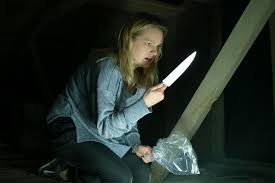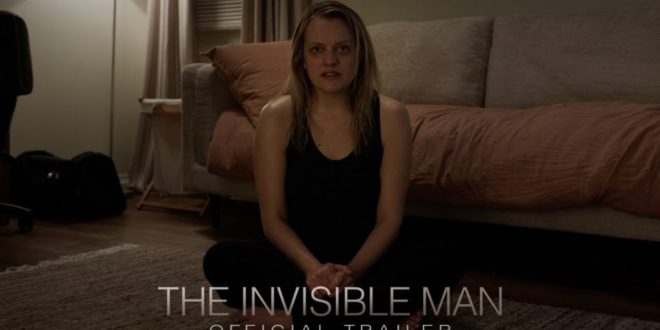When tackling horror classics of the past, it’s paramount that you keep your ideas current and fresh, while still remaining true to the vision of the filmmaker. The 2020 version of The Invisible Man, which was based on the 1897 book by H.G. Wells, did just that, already topping my list for the best horror film of the year. Whether or not that accolade holds up by the end of the year is another story, but the way this film is crafted is sure to remain heavily on my mind. The Invisible Man masterfully uses jump scares quite effectively. Let’s examine this film so we can pinpoint exactly what makes it such a pleasant surprise.
The Invisible Man was written and directed by Leigh Whannell (Saw 2004 – read our retro review here) who was a great fit for such a project. He’s horror royalty at this point, being heavily involved in both the Saw and Insidious franchises as a writer and actor. His challenge for this film was to make the invisible man unseen without turning the film into a piece of far-fetched schlock. Whannell did that perfectly, never losing a bit of the tension or characterization inside the story’s lore.
The Invisible Man tells the story of Cecilia Kass (Elizabeth Moss: The Handmaids’s Tale TV series), an abused woman who’s relieved to hear that her evil, rich ex-boyfriend, Adrian (Oliver Jackson-Cohen: Dracula TV series), has committed suicide. Unfortunately for her, he may not be dead at all. In fact, Adrian may have found a scientific way to stay with Cecilia forever.
The acting from the entire cast is tremendous, but Moss in particular deserves some award consideration. The viewer will find themselves along on the journey with her, cheering and advising her as she tries to survive a torment that begins to tear her world apart.

Choosing to use an abusive relationship as the backdrop for this story is a bold and cunning choice, finding an especially relatable place in the hearts of the audience members and giving the film an extra creep factor. Simply put, you know an enemy is Cecelia the entire time, but no one can see him. Your heart is racing while waiting for him to strike, and you put yourself in the place of the protagonist as she suffers the same fate. A lot of filmmakers are often (rightfully) chastised for their over-reliance on jump scares, using loud noises as a cheap way to make an audience feel fear without a story. But in The Invisible Man, every jump scare is built well and feels fair.

But it’s not just the tense, empathetic plot and the powerful acting that shines through in The Invisible Man. The sound design aids the cause tremendously. Every creak and footstep builds the tension as you’re waiting for the next reveal. Both of the main characters are intelligent as they try to find unique ways to get to each other. The locations are spacious and beautiful, bringing you to that goosebumps-inducing, claustrophobic feel. The story finds a nice way to offer twists and turns without bragging about its cleverness.
Overall, The Invisible Man is a home run. There’s a great blend of modernization while paying homage to the 1933 original. Here’s to hoping this film won’t be invisible once the end-of-year lists start piling up.
 PopHorror Let's Get Scared
PopHorror Let's Get Scared




